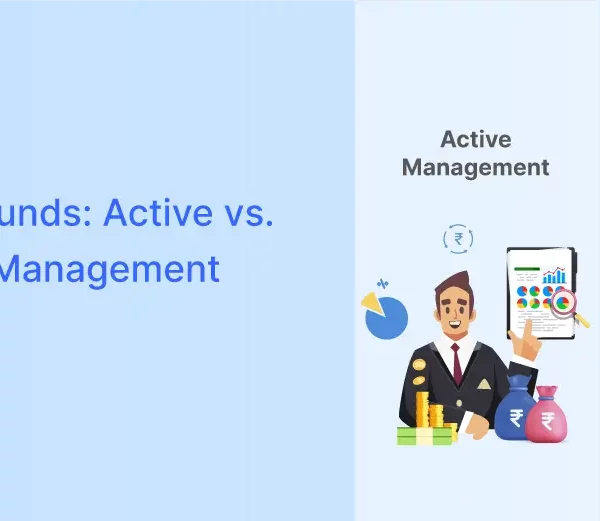Mutual funds have emerged as one of the most popular investment options for investors seeking long-term wealth creation. Mutual funds are professionally managed investment vehicles that pool money from various investors to invest in a diversified portfolio of securities. These normally include stocks and bonds as well as other financial instruments. Generally, these investments offer returns that are higher than interest rates offered by fixed income-generating instruments.
One crucial aspect that is fundamental to mutual funds and what sets them apart is diversification. Let’s understand what is mutual fund diversification and why is it important for your mutual fund portfolio with Koshex.
What is Mutual fund Diversification?
Mutual fund diversification refers to the strategy of spreading investments across a variety of asset classes and sectors. Instead of investing in a single security or a handful of securities, mutual funds create a portfolio that includes a mix of stocks, bonds, and other financial instruments.
The objective of mutual fund diversification is to minimize the risk associated with investing by reducing the reliance on any single asset. By allocating funds across different asset classes and securities, mutual funds aim to balance the potential risks and returns of the overall portfolio.
Diversification is based on the principle that different asset classes and securities tend to perform differently under various market conditions. When one investment in the portfolio is experiencing a decline in value, another investment may be performing well, thereby offsetting the potential losses. This helps to reduce the overall volatility and risk of the portfolio.
Mutual funds fundamentally follow diversification as the funds are already spread across equities of different companies as per the terms of the scheme. For instance, if you select a small-cap mutual fund, then all your funds will go towards equities of different small-cap companies.
However, investors can further diversify their portfolios by investing in multiple mutual fund schemes. For example, if you invest in small-cap and Nifty 50 index funds, then your funds are spread across both small-cap companies and companies with the highest market capitalization in India.
Why Mutual Fund Diversification?
The importance of mutual fund diversification cannot be neglected whatever the asset class or investment avenue. Let’s understand why you should always have a diversified portfolio:
1. Reducing Portfolio Risk
Diversification allows investors to potentially reduce the overall risk of their portfolio without sacrificing potential returns. By investing in a range of assets, mutual funds can mitigate the impact of volatility in any single investment. The rationale behind this strategy is that different asset classes and securities tend to perform differently under various market conditions. Therefore, when one investment in the portfolio is underperforming, another may be performing well, balancing out the overall return.
2. Protecting Against Market Volatility
Financial markets are inherently volatile and individual securities can experience significant price fluctuations due to various factors. These can include economic conditions, geopolitical events, or company-specific factors. A well-diversified mutual fund can help protect investors against the adverse effects of market volatility. When one stock or sector is experiencing a downturn, the impact on the overall fund performance is minimized by the presence of other investments that may be performing better.
3. Opportunity for Growth and Income
Diversification also offers investors the opportunity for both growth and income. Mutual funds allocate their investments across various sectors and asset classes, including stocks, bonds, and other income-generating instruments. By diversifying across different asset classes, investors can potentially benefit from growth-oriented assets while also earning a steady income from fixed-income securities. This balanced approach helps investors achieve their financial goals while managing risk effectively.
4. Access to Expertise and Research
One of the key advantages of investing in mutual funds is gaining access to professional management and research capabilities. Mutual fund managers have the expertise and resources to analyze and identify investment opportunities across different sectors and geographies. By investing in a mutual fund, individuals can benefit from the fund manager‘s knowledge and experience in selecting a well-diversified portfolio. This can save investors significant time and effort in conducting individual security analyses.
5. Ease of Investing and Liquidity
Mutual funds provide investors with an easy and convenient way to diversify their investments. With a single investment in a mutual fund, an individual gains exposure to a diversified portfolio, eliminating the need to select and manage individual securities. Moreover, mutual funds offer liquidity, allowing investors to buy or sell their shares at the prevailing net asset value (NAV) on any business day. This liquidity ensures that investors have the flexibility to adjust their investment positions as per their changing financial needs and market conditions.
Tips to Diversify Your Mutual Fund Portfolio
Diversifying your mutual fund portfolio is crucial for managing risk and maximizing potential returns. Here are some tips to help you effectively diversify mutual fund investments:
- Understand Your Investment Goals and Risk Tolerance: Before diversifying your mutual fund portfolio, assess your investment objectives, time horizon, and risk tolerance. This will help you determine the appropriate asset allocation strategy and level of diversification needed to align with your financial goals.
- Allocate Across Different Asset Classes: Consider investing in mutual funds that cover a variety of asset classes, such as index funds, stocks, bonds, etc. Each asset class has its own risk and return characteristics and by diversifying across multiple asset classes, you can reduce the impact of any single asset class’s performance on your overall portfolio.
- Invest in Funds with Different Investment Styles: Different mutual funds follow distinct investment styles. While some may be growth mutual funds, others can be dividend-oriented mutual funds. By including funds with varying investment styles, you can further diversify your portfolio and potentially benefit from different market conditions and economic cycles.
- Choose Funds with Different Market Capitalizations: Market capitalization refers to the size of a company as measured by its stock market value. You should diversify your mutual fund portfolio by investing in mutual funds that focus on large-cap, mid-cap, and small-cap stocks. Different market capitalizations offer different growth opportunities and risk profiles.
- Consider Index or ETF Funds: Index funds or exchange-traded funds (ETFs) track broad market indexes and can provide instant diversification across multiple securities within a specific asset class or sector. Index funds are passively managed funds and have a low expense ratio.
- Regularly Review and Rebalance Your Portfolio: Markets and investment performances can change over time, affecting the diversification of your portfolio. Regularly review your portfolio and rebalance it if necessary to maintain the desired asset allocation and diversification. Rebalancing involves selling or buying funds to bring your portfolio back to its original target allocation.
- Seek Professional Advice: If you are unsure how to diversify your mutual fund portfolio or need assistance in selecting appropriate funds, consider consulting with a financial advisor. They can provide personalized guidance based on your financial situation, financial goals, and risk tolerance.
In Summary
Diversification is a fundamental principle of successful investing. It plays a vital role in the context of mutual fund investments as well. By spreading investments across a range of asset classes, sectors, and regions, mutual funds can potentially reduce portfolio risk and protect against market volatility while providing opportunities for growth and income. Additionally, investing in mutual funds offers access to professional expertise and research, ease of investing, and liquidity.
Koshex provides you with 5,000 different mutual fund options to diversify your portfolio. From small-cap, indexes to sector-specific funds like IT, and real estate– you can invest in whichever fund you desire in line with your financial goals. Moreover, Koshex also offers personalized investment recommendations based on your risk profile and investment goals. Sign up and kickstart your investment journey today!
Frequently Asked Questions (FAQs)
1. Can I diversify my portfolio geographically?
Yes. Now, investing in the USA by sitting in India is simpler than ever. This allows geographic diversification of mutual funds. You can explore mutual funds that offer exposure to various geographic regions and countries. Investing in both domestic and international funds can provide diversification benefits and help mitigate the risk associated with any single country or region. You should consider factors like economic stability, political landscape, and currency risks when selecting funds with international exposure.
2. Can I diversify my mutual funds across different sectors?
Yes, you can allocate your funds across different sectors of the economy, such as technology, healthcare, financial services, consumer goods, and energy. Each sector has unique dynamics and by diversifying across sectors, you can reduce the concentration risk of being heavily invested in a single sector.









Leave a Comment